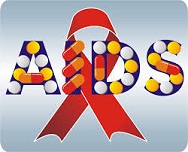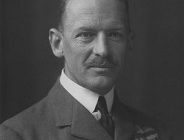Require info on Annabelle Wienand in South Africa? Read more about Prof. Annabelle Wienand in South Africa and her different publications…
Annabelle Wienand from South Africa is a faculty member in the Department of Humanities at the University of Cape Town located in Cape Town. This author is known for her different publications on HIV. Many articles have been published by her on the different approaches both participatory and visual and their potential for creating an awareness of HIV in South Africa.
According to the author South Africa has by far the highest number of HIV-infected people across the globe. Conversely the literacy level regarding HIV, its causes and management, is the lowest in this part of the world.
Participatory and Visual Aids for HIV Awareness
The author goes on to assert that there have been many literacy campaigns conducted throughout the country to reduce the level and spread of HIV. However there is little or no information among infected people and their family members when it comes to the biomedical nature of HIV. This in turn definitely affects the control of the spread of the disease and also does not promote the VCT or voluntary counseling testing.
Therefore infected patients will not access clinics and take on antiretroviral therapy as they are unaware of its effect and assistance in curtailing HIV. In her dissertation the author has identified different roles that are essentially executed by the different treatment activists as well as the community health workers.
These health workers aim to provide the community and its members with greater degree of information on HIV. In their own way the community health workers actually support the infrastructure of the government and private healthcare.
They do this by spreading the right information and therefore increasing the incidence of community members seeking medical care and assistance. The author conducted a study to minimize the gap between the different initiatives of the health care system and healthcare workers by providing a complementary set of participatory and visual HIV literacy workshops.
Annabelle Wienand is known for the publication of the esteemed report ‘The Broker Thesis Project 3’, which covered all these aspects. The aim of her workshop was to create different life-size images of the human body. The modular body map was utilized to increase awareness of the participants with regards to the human physiology and structure of the human body. Participants who were previously unaware of basic knowledge of human biology could increase their understanding of well-being and disease through different exercises. The myriad of participatory exercises also utilized the approach of training the trainer. The result was the achievement of its dual-purpose of not only enabling the participants to get more knowledge on HIV and its management, but also to apply them in their daily practice. The course is not focused on general theory but actually gave workable ideas.
Structure of the Workshop
40 participants were segregated in three separate groups. These included trainers for treatment and literacy of HIV, community health workers and HIV-positive mothers. A mixed method focused mainly on qualitative approach, participant observation, multiple-choice questionnaires and analysis of the body map drawings. Additionally, detailed yet semi-structured interviews were also conducted. Using this data the responses of the participants could be assessed and the content of the workshop be evaluated against it. Even though most of the participants had prior knowledge of the content, the efficacy of using participatory training methods and visual aids was well received. This approach piqued the interest of the participants as well.
The new idea increased the effectiveness because the straightforward material could be visualized, understood and memorized easily. Furthermore, the practicality of the material was high and could be applied in their daily work environment also. Since the group sample size was very small, the author recommended that more research and time be spent on analyzing this approach.





